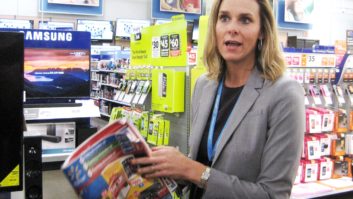
It’s no mean feat to be all things to all people in all places, but “always on” availability is the hallmark of cross-channel selling, and it’s key to survival in the modern retailing world.
The question is: How can businesses possibly match the Amazon model on user experience (UX), price and product range, not to mention the back-end IP and IT capabilities holding it all together? Well, honestly, we don’t think business can do it in isolation anymore.
Where once it was just small independent retailers feeling the heat, today large multinational retail chains struggle with adaption strategies against maturing digital disruptors. While moving to a cross channel sales approach may be the obvious solution for brick-and-mortar retailers, the challenge to make it happen — and successfully compete as a new online entrant — is phenomenal.
Within the mobile sector, many carriers and retailers may only sell 5 percent online at the moment, but are aiming to lift that figure up to 25-30 percent of total sales. How can businesses hit such aspirational targets with the holidays looming? We’re starting to see some very interesting “share economy” concepts flowing into retail and we think these ideas will be the linchpin of successful cross-channel selling.
All manner of global retailing businesses are rapidly adapting to cross channel approaches. In Australia, we’re seeing the establishment of a retail presence for Etsy, the online doyenne of craft. In Asia, we’re noting retail supermarket chains moving into online kiosk spaces in high-traffic utility zones like train stations. And in the U.S., the decline in foot traffic is birthing the movement of profit-per-square-foot metrics in the brick-and-mortar domain.
Even a market leader like Amazon isn’t standing still. It’s establishing micro-warehousing in high-density locations like New York, and abandoning expensive courier contracts for share-ride services to deliver on product fulfilment needs.
As retailers begin to enter this year’s holiday crush, what lessons can aspiring e-commerce retailers and operators learn to make the successful transition to cross-channel selling? There are five key steps retailers need to achieve:
1. Huge product range, multimedia product information and a marketplace: The very same huge product range that’s available online has to be available in-store as well. The most successful retailers of the future will encourage consumers to browse its “virtual inventory” via an in-store online catalogue, and place their order there too. This gives retailers a huge product offering without having to keep them in stock. Consumers are satisfied by the wide choice and retailers mitigate their inventory risk.
2. Competitive prices: Accurate information on the current market price allows the retailer to offer a competitively priced product at any time, with the platform running hundreds of thousands of price checks each month and calculating a “true” market price for each product. The consumer in-store is shown a retail price for the chosen product that is on par with what they would find on Amazon or a price-comparison website.
3. Digital signage in-store and customised branding: Using digital signage screens in-store, marketing campaigns and current promotional offers can be managed centrally at the point of sale (POS). As a regional “brand” and the “local hero,” each retail location needs his or her own online shop with a huge product range, a customizable homepage and a best-of-breed e-commerce functionality.
4. Geo-tagging in mobile commerce and e-mail marketing: The online shop of each location of a brick-and-mortar retailer has to be geo-tagged in order to achieve the best search result in a localized online search. A responsive design enables m-commerce. Furthermore, customer relationship management (CRM) techniques such as customized email newsletters create visibility online for the bricks-and-mortar retailer.
5. Delivery and drop-shipping: Rapid and perfect delivery is a given in e-commerce. The process chain between supplier, retailer and consumer has to be managed seamlessly.
Achieving all five steps is difficult, especially during the busiest time of year, but realizing and maintaining them will reap loyal customers year after year. Indeed, as a result of cross-channel selling done correctly, one leading European mobile virtual network operator (MVNO) saw a 65 percent decrease in their accessory inventory levels, vastly reducing excess stock in store rooms, while growing accessory sales by 33 percent on average year over year.
That same MVNO also experienced some very impressive customer re-commitment figures (up nearly 68 percent year over year) and new contract sales (up nearly 58 percent), driven by increased store traffic and improved word of mouth. That is the power of cross channel selling.
This MVNO used a new online platform that offers players of any size an option for their own Amazon-like web store, complete with payment gateway and aftersales processes. Its e-commerce capability with an in-store kiosk enables store employees to focus efforts on upselling and cross-selling through the kiosk while educating consumers. These innovative approaches enable retailers to compete in the ever-evolving landscape of cross-channel selling.
There’s no doubt transitioning to the cross-channel era offers significant challenges to retailers across the globe. But with consumer appetite for e-commerce growing rapidly and existing revenues still heavily tied to in-store experiences, the lessons from Brightstar’s eco-system shows that collaboration is paramount to powering on in the retailing game.
Bela Lainck is president of global services at Brightstar, a leading global provider of B-to-B services for mobile manufacturers, operators, retailers and enterprises. Dominik Brokelmann is founder/CEO of Brodos AG, a top mobile distributor in Germany.











